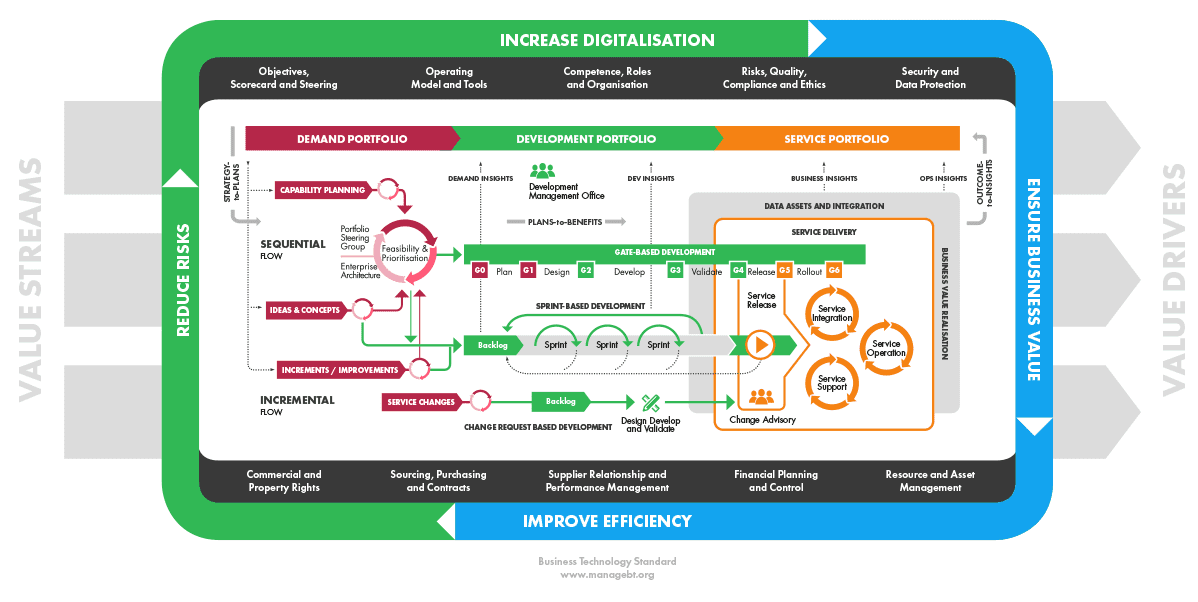Strategic planning is based on a long-term vision and short-term objectives defined in the business technology strategy. The strategy outlines the key requirements for a period varying typically between two to five years and the steps needed to reach the target state. The strategy is approved by the business technology steering group.
The strategic imperatives are further broken into action plans within a shorter period (e.g. 12 months). The execution of the plans will then be carried out in various levels of the organisation and in the governance bodies.
Strategy and action plans typically provide guidelines on the following topics:
An effective implementation of the strategy typically requires:
Today, the success of any business depends on the effective exploitation of information technology. Therefore, harnessing the potential of information technology to create value for the business should be in the core of every company’s business strategy.
Value streams define business, technology or other domain focus for value creation. Business technology can
have an ideal amount of five to ten value streams.
Each value stream should have:
The picture below illustrates some alternative ways to organise value streams in retail business. While each of the perspectives are viable value streams candidates, the combined value streams perspective enhances co-creation and co-development with multiple viewpoints and topics.
Figure 2.1.1 Value streams examples in retail business
Another viewpoint for the strategy alignment is based on the role of the information technology for the company as shown in the illustration below:
| What is the meaning of information technology? | How to do Strategic Planning? |
How to do Solution Design? |
How to do GO Decisions? |
How to do Steering? |
| Business PRODUCT | Business planning and product epics | Service design and user stories | Self-governed P/L based decisions by business | Self-governed by business and a product owner |
| Business ASSET | Business capability planning and EA roadmaps | Solution design or business technology design | Portfolio governed and business case based; or self-governed if budgeted | Self-governed by a program or project steering group |
| Business ENABLER | Strategy planning and service roadmaps | Solution design and technical design | Portfolio governed and business case based; or self-governed if budgeted. | Self-governed by a service owner or by a project steering group |
When information technology is seen as a business product, the strategic planning is performed as for any other business product: studying and defining the requirements for the product, determining the prioritised features, pricing and distribution channels. In agile development methodology, the strategic intention is broken into user stories with business requirements, customer requests, and product features.
When information technology is seen as a business asset, the strategic planning focus is based on identifying the investments, capacity and expertise needed to meet business needs. This is usually supported by the enterprise architecture (EA) roadmaps that contain a plan on how to move from the current state to the target state and meet the company’s strategic intent.
When information technology is considered as a business enabler, there can be a more traditional strategy defining how information technology supports the business strategy and objectives. The strategic plan is completed by service roadmaps defining concrete action plans on how to carry out the development of the services within the defined strategy period.
